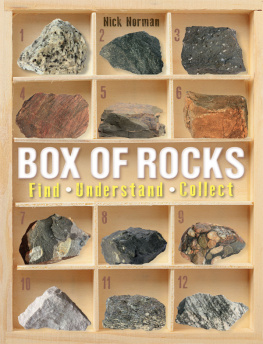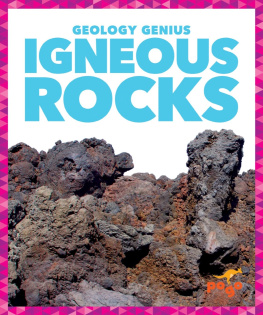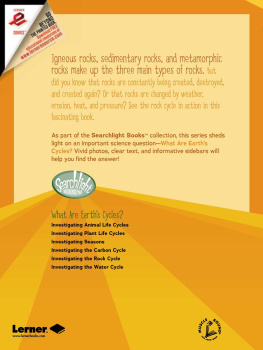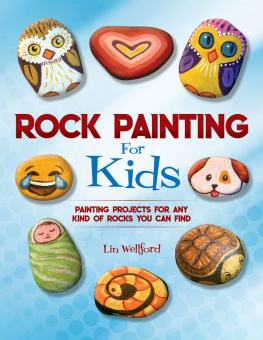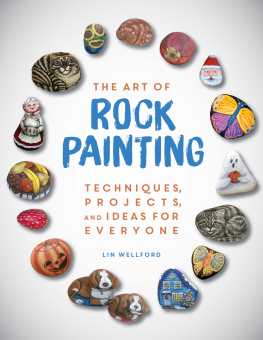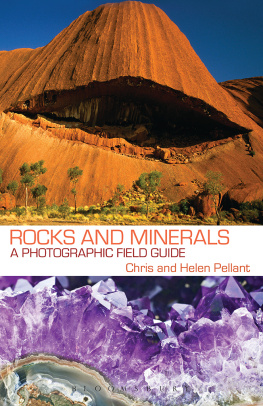
For Ryan
Published in 2009 by The Rosen Publishing Group, Inc.
29 East 21st Street, New York, NY 10010
Copyright 2009 by The Rosen Publishing Group, Inc.
All rights reserved. No part of this book may be reproduced in any form without permission in writing from the publisher, except by a reviewer.
First Edition
Editor: Amelie von Zumbusch
Book Design: Kate Laczynski
Photo Researcher: Jessica Gerweck
Photo Credits: Cover, pp. Ed Reschke/ Peter Arnold, Inc.
Library of Congress Cataloging-in-Publication Data
Allen, Nancy Kelly, 1949
Granite and other igneous rocks / Nancy Kelly Allen. 1st ed.
p. cm. (Rock it!)
Includes index.
ISBN 978-1-4358-2758-5 (library binding) ISBN 978-1-4358-3181-0 (pbk.)
ISBN 978-1-4358-3187-2 (6-pack)
1. Rocks, IgneousJuvenile literature. I. Title.
QE461.A548 2009
552.1dc22
2008030095
Manufactured in the United States of America
CONTENTS
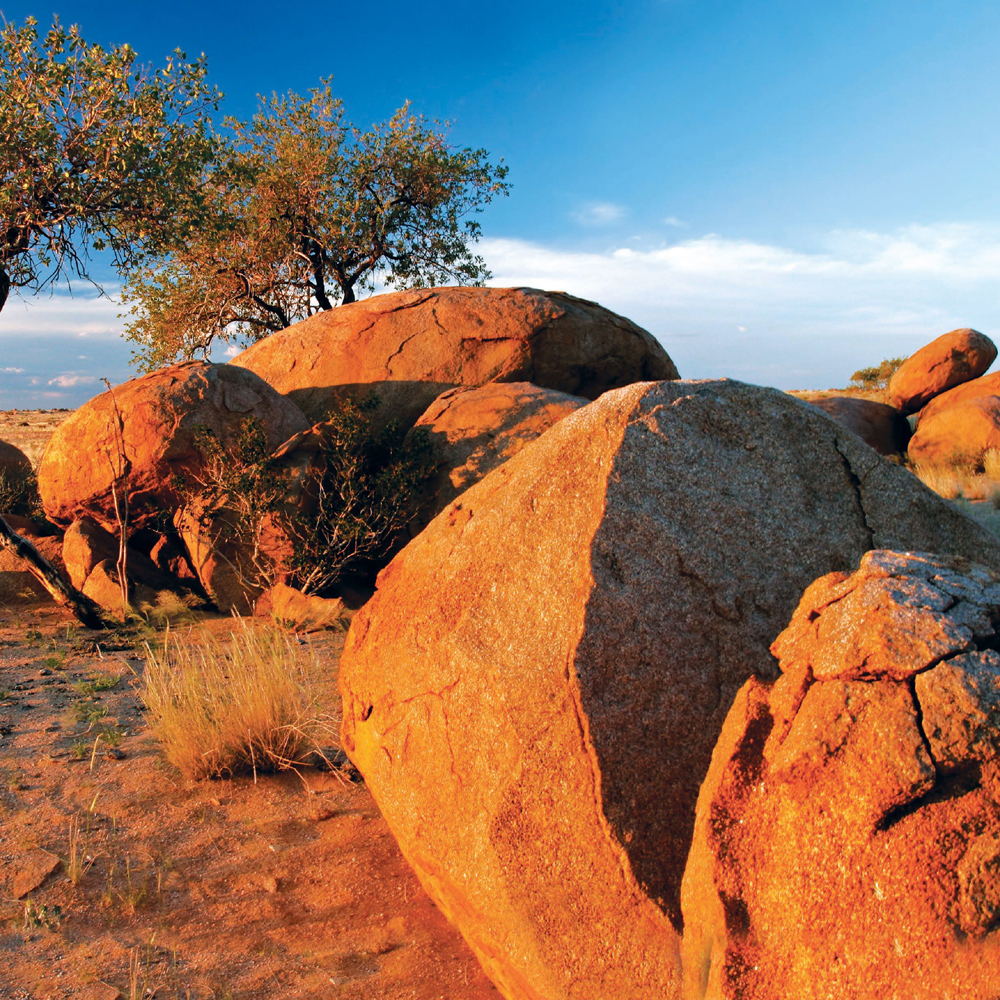
Granite rocks, such as these ones in the African country of Namibia, are igneous rocks. Granite forms deep inside Earth.
Rocks Inside and Out
Can you imagine rocks so hot that they melt? Deep inside Earth, it is hot enough to melt rocks. Sometimes this hot, melted rock gets trapped next to solid rocks. Slowly, the melted rock cools and hardens into a kind of rock called igneous rock. The word igneous comes from the Latin word ignis, which means fire.
Igneous rocks form above ground, too. Earths form at these weak spots. Hot, melted rock pushes up through the volcanoes and flows out over Earths surface. When this melted rock cools and hardens, it forms igneous rocks.

You can see Earths four layers in this picture. The crust is the thin, dark, outside layer. The mantle is shown in red, the outer core in yellow, and the inner core in white.
Hot to the Core
All igneous rocks begin as melted rock, called core. The crust is broken into large, thick plates made of rock. The plates move around slowly over the mantle. Some of Earths magma forms at places where the plates rub together.
Most magma forms in Earths mantle. The mantle is very hot. In fact, it is generally between 2,912 F and 7,232 F (1,6004,000 C) there! There is also a lot of in the mantle. The high heat and pressure make some of the mantles rock melt into magma.

Popocatpetl, in Mexico, is North Americas second-largest volcano. It is 17,800 feet (5,425 m) tall.
Exploding Volcanoes
Magma does not always stay in the mantle. Sometimes, the plates that make up Earths crust pull apart or rub together to form volcanoes. Heat and pressure from inside Earth push magma through these volcanoes. Once the magma reaches Earths surface, it is called lava.
Volcanoes occur in different sizes and shapes. Some are cone-shaped mountains. Others are long breaks in the ground. Some volcanoes shoot lava high into the air in showy explosions. Lava fl ows slowly out of others. There are even underwater volcanoes! All kinds of volcanoes produce igneous rock.
Earth has about 800 active volcanoes. There are 700 more volcanoes that might some day become active. Many of Earths volcanoes circle the Pacifi c Ocean. This string of volcanoes is called the Ring of Fire.
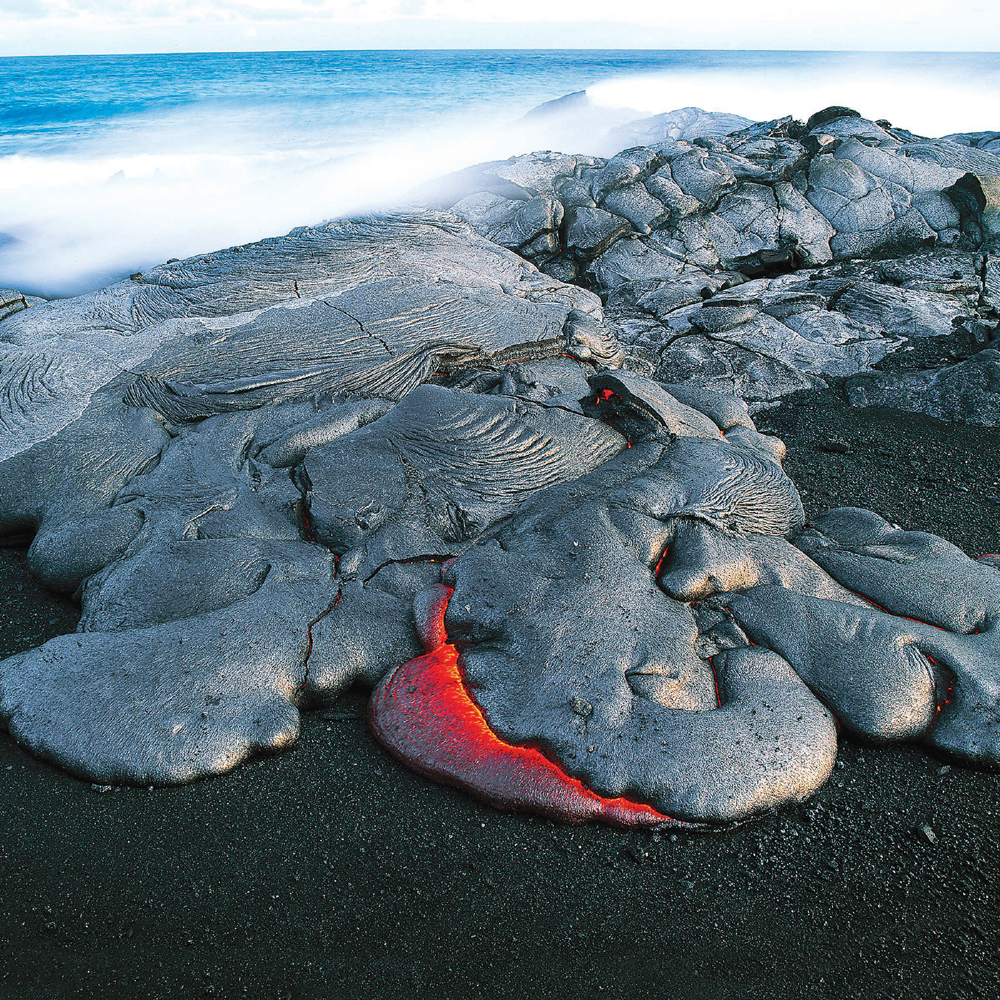
This pahoehoe is fl owing over a beach in the Hawaii Volcanoes National Park. You can already see the wavy surface the pahoehoe will have when it cools.
The Outside Story
Igneous rock that forms outside Earths crust is called extrusive rock. Lava from volcanoes forms most extrusive rocks. Once the lava leaves the volcano, it cools and hardens quickly. The . This means that extrusive rocks are generally very smooth.
There are several different kinds of lava. Different kinds of lava produce rocks that look different. For example, underwater volcanoes produce pillow lava. This forms large, rounded lumps of rock. A kind of smoothly moving lava called forms bumpy rocks. Pahoehoe is a Hawaiian word. It is most often used for lava from Hawaiian volcanoes, such as Kilauea.
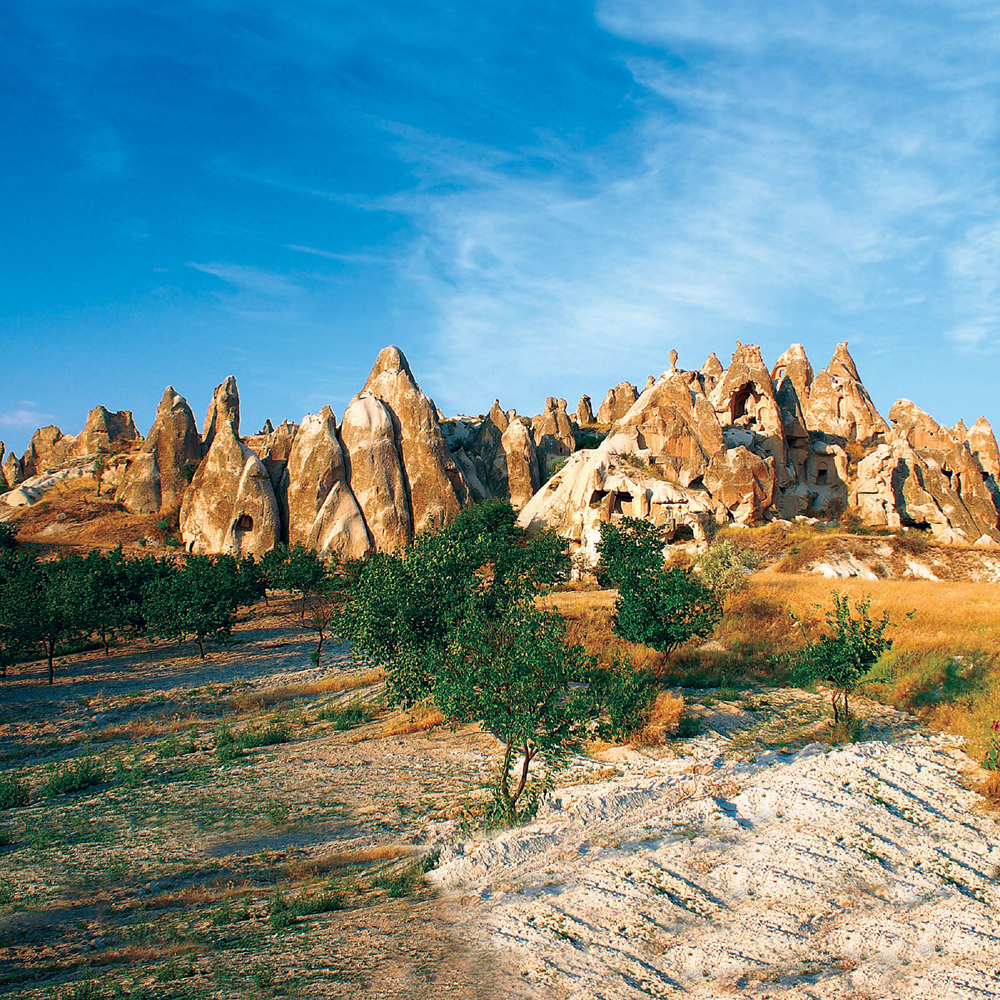
Turkeys Goreme National Park is home to rock formations called fairy chimneys. They are made mostly from tuff, but some have basalt tops. In the past, people cut homes in the fairy chimneys.
Solid as a Rock
Several different kinds of rocks form from lava. For example, rhyolite is a kind of rock made from thick lava. This rock has a light color and fi ne grains. Basalt is the most common type of extrusive igneous rock. Volcanoes that on the ocean fl oor often form basalt rocks. Basalt cools quickly and forms fi ne grains.
Some volcanoes shoot out hot ash instead of lava. Ash is a powder or dust made of tiny pieces of hardened magma. A soft kind of igneous rock called tuff forms from the ash from volcanic eruptions.
The Giants Causeway, in Northern Ireland, is made of basalt rock. The rock looks as if it was cut, but it was really formed by a lava flow.
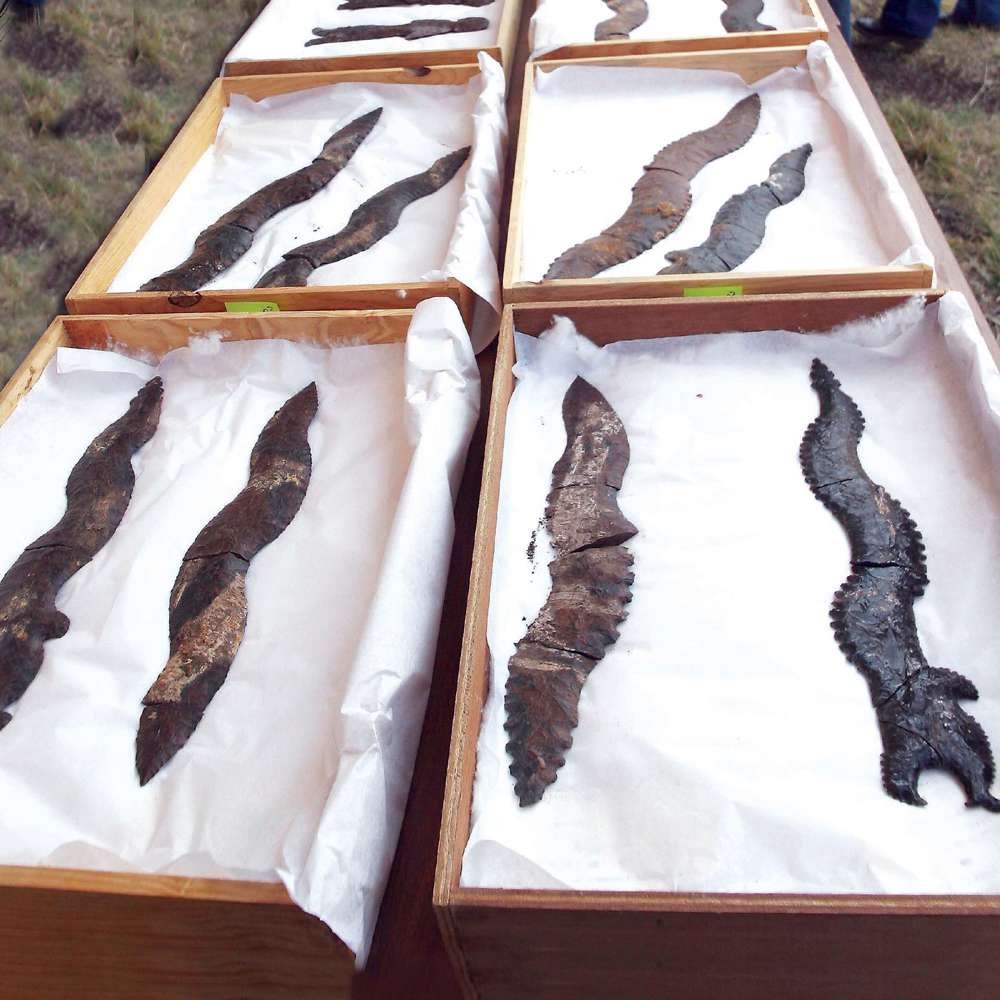
These daggers are made of the igneous rock obsidian. They were produced by the Aztecs, a Native American people who lived in what is now Mexico.
Sharp as a Rock
Igneous rocks can be beautiful. Obsidian is a black or dark red extrusive igneous rock. This rock is a smooth, shiny, natural glass. Like glass, it breaks into pieces that have sharp edges. Obsidian forms when lava cools very quickly. It cools so fast that no crystals form.
Pumice is a very unusual extrusive igneous rock. It forms when lava cools quickly and gases get trapped inside it. The gases form air pockets or small holes. The holes make pumice very light. It is so light that it fl oats in water!
Long ago, people used obsidian to make tools, such as knife blades. The rocks sharp edges were used for cutting. The shiny rock was also used as a mirror, or looking glass.
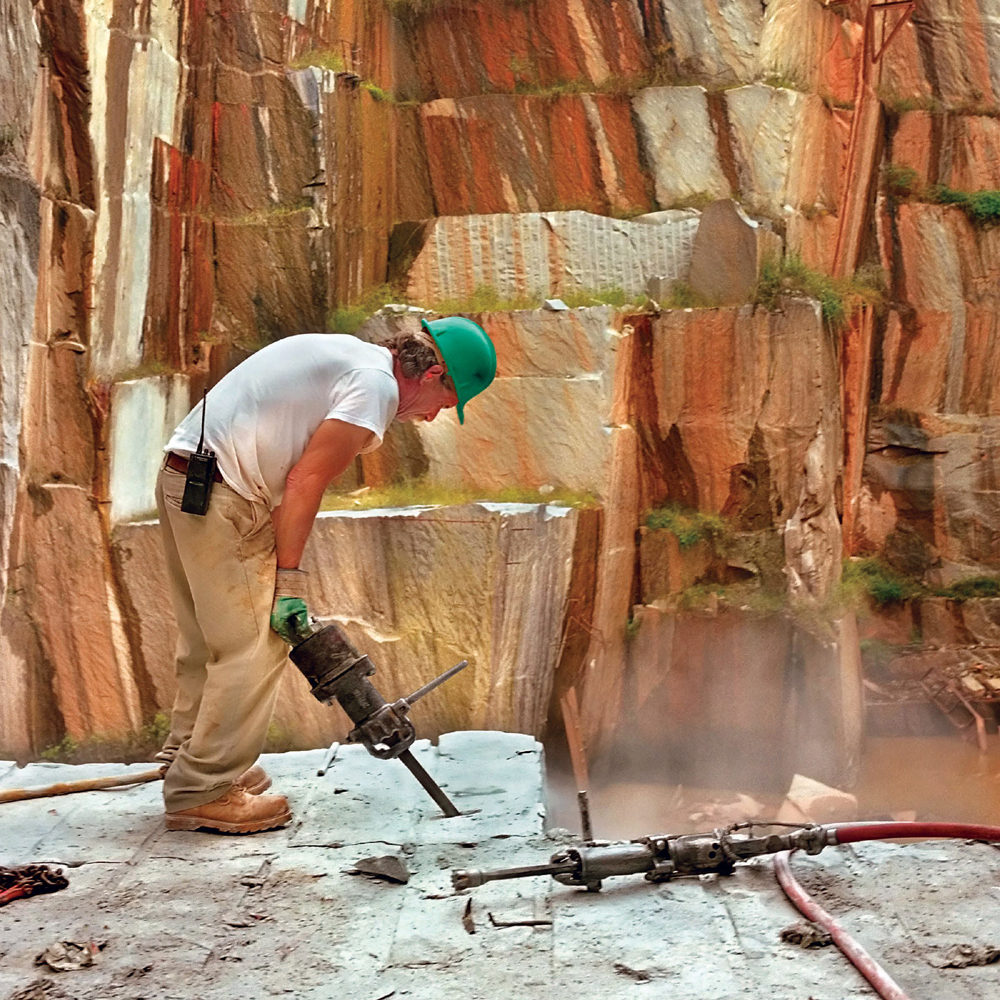
The intrusive rock granite is often used for building. This man is cutting building blocks in a granite quarry. Quarries are places where rocks or minerals are taken out of the ground
The Inside Story
Not all igneous rocks are made by volcanoes. Intrusive igneous rocks form from magma deep inside Earth. These rocks cool and harden very slowly. The slow cooling causes the minerals inside the hardening rocks to form large crystals. These crystals give intrusive igneous rocks a grainy surface.
Intrusive rocks appear on Earths surface when they are pushed up through the crust or when the rocks above them wear away. This can take of years. Dolerite, granite, and gabbro are three types of intrusive igneous rocks. Dolerite is a dark rock. It has smaller grains than granite and gabbro do because dolerite cooled more quickly when it formed.


